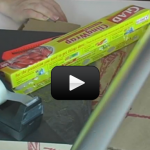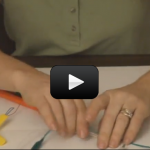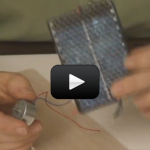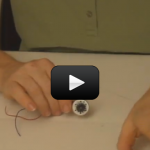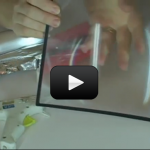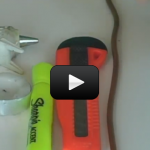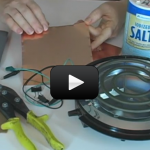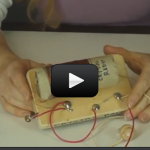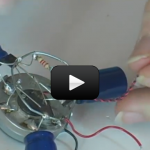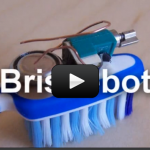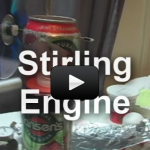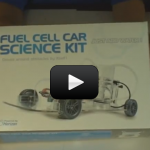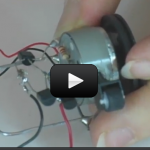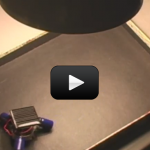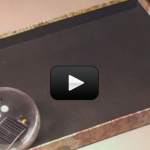Solar Cookies
Can you use the power of the sun without using solar cells? You bet! We’re going to focus the incoming light down into a heat-absorbing box that will actually cook your food for you. Remember from Unit 9 how we learned about photons (packets of light)? Sunlight at the Earth’s surface is mostly in the … Continue reading "Solar Cookies" |
Solar Boat
Does it really matter what angle the solar cell makes with the incoming sunlight? If so, does it matter much? When the sun moves across the sky, solar cells on a house receive different amounts of sunlight. You’re going to find out exactly how much this varies by building your own solar boat. We’re going … Continue reading "Solar Boat" |
Solar Car
Solar energy (power) refers to collecting this energy and storing it for another use, like driving a car. The sun blasts 174 x 1015 watts (which is 174,000,000,000,000,000 watts) of energy through radiation to the earth, but only 70% of that amount actually makes it to the surface. And since the surface of the earth … Continue reading "Solar Car" |
Wind Turbine
Believe it or not, most of the electricity you use comes from moving magnets around coils of wire! Wind turbines spin big coils of wire around very powerful magnets (or very powerful magnets around big coils of wire) by capturing the flow. Here’s how it works: when a propeller is placed in a moving fluid … Continue reading "Wind Turbine" |
Marshmallow Roaster
Do you like marshmallows cooked over a campfire? What if you don’t have a campfire, though? We’ll solve that problem by building our own food roaster – you can roast hot dogs, marshmallows, anything you want. And it’s battery-free, as this device is powered by the sun. NOTE: This roaster is powerful enough to start … Continue reading "Marshmallow Roaster" |
Steamboats
In 1920’s, these were a big hit. They were originally called “Putt Putt Steam Boats”, and were fascinating toys for adults and kids alike. We’ll be making our own version that will chug along for hours. This is a classic demonstration for learning about heat, energy, and how to get your kids to take a … Continue reading "Steamboats" |
Solar Battery
This is the kind of energy most people think of when you mention ‘alternative energy’, and for good reason! Without the sun, none of anything you see around you could be here. Plants have known forever how to take the energy and turn it into usable stuff… so why can’t we? The truth is that … Continue reading "Solar Battery" |
Crystal Radio
This project is for advanced students. A crystal radio is among the simplest of radio receivers – there’s no battery or power source, and nearly no moving parts. The source of power comes directly from the radio waves themselves. The crystal radio turns the radio signal directly into a signal that the human ear can … Continue reading "Crystal Radio" |
BEAM Robots
This project is for advanced students.This is one of the coolest applications of renewable energy to come about in recent years. BEAM stands for Biology, Electronics, Aesthetics, and Mechanics. It basically refers to a class of robots that instead of having complicated brains, rely on nervous-system type of sensors to interact with their world. Some … Continue reading "BEAM Robots" |
Bristle Brush Bot
This is the simplest robot you can make… out of old parts from around the house. While this little robot doesn’t use energy from the sun or wind, we’ve placed it here with other alternative energy projects because the parts come from the trash bin. This project is an extension of the Jigglebot robot from … Continue reading "Bristle Brush Bot" |
Stirling Engine
This project is for advanced students.This Stirling Engine project is a very advanced project that requires skill, patience, and troubleshooting persistence in order to work right. Find yourself a seasoned Do-It-Yourself type of adult (someone who loves to fix things or tinker in the garage) before you start working on this project, or you’ll go … Continue reading "Stirling Engine" |
Fuel Cell Power
This project is for advanced students. We’re going to build a car that runs entirely on sunlight and water. Use energy from the sun, we’ll first use a solar cell to convert sunlight into electricity. Then we’ll use that electricity to split the water molecule (H2O) into hydrogen and oxygen atoms and store them in … Continue reading "Fuel Cell Power" |
BEAM Robot: Solar Roller
Note: Brian Cox has created a BEAM Bot kit as an alternative BEAM project.Brian's BEAM BOT is modeled after small BEAM projects where parts are soldered to each other, but such projects can be difficult to solder.BEAM Bot uses a standard Printed Circuit Board (PCB) as the frame thus making it easier to assemble.You can … Continue reading "BEAM Robot: Solar Roller" |
BEAM Robot: Trimet
Note: Brian Cox has created a BEAM Bot kit as an alternative to the Trimet project.Brian's BEAM BOT is modeled after small BEAM projects where parts are soldered to each other, but such projects can be difficult to solder.BEAM Bot uses a standard Printed Circuit Board (PCB) as the frame thus making it easier to … Continue reading "BEAM Robot: Trimet" |
BEAM Robot: MiniBall
This project is for advanced students.This is one of the coolest applications of renewable energy to come about in recent years. BEAM stands for Biology, Electronics, Aesthetics, and Mechanics. It basically refers to a class of robots that instead of having complicated brains, rely on nervous-system type of sensors to interact with their world. Some … Continue reading "BEAM Robot: MiniBall" |

